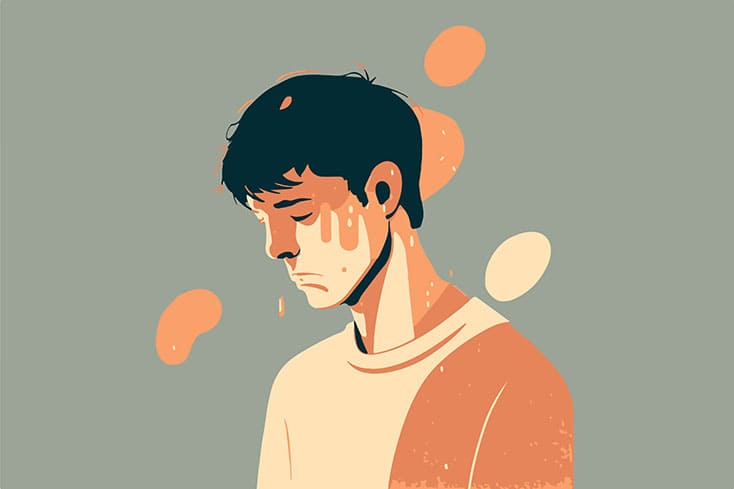May 17, 2023
By Max E. Guttman, LCSW
If you or someone you know is experiencing a mental health, suicide or substance use crisis or emotional distress, reach out 24/7 to the 988 Suicide and Crisis Lifeline (formerly known as the National Suicide Prevention Lifeline) by dialing or texting 988 or using chat services at 988lifeline.org to connect to a trained crisis counselor. You can also get crisis text support via the Crisis Text Line by texting NAMI to 741741.

Self-harm, the intentional and direct harming of one’s own body, is a serious problem that can profoundly impact a person’s life. This can include a variety of behaviors, such as cutting, burning or scratching oneself. There are many reasons why someone might self-harm. It is often a way to cope with severe distress and overwhelming emotions, like sadness, anger or shame. It can also be a way to relieve boredom or loneliness. For some people, self-harm is a way to feel in control of their bodies and lives.
Self-harm is a serious issue that can lead to severe injury or even death. Therefore, it is crucial to identify the signs and symptoms of self-harm to provide the appropriate care and treatment for your clients, friends or family members.
Many risk factorsfor self-harm include mental health conditions, substance use, a history of trauma or abuse and impulsivity. It is often a coping mechanism for individuals struggling with difficult life circumstances or experiences. You can also look for the following:
If you are concerned that a person may be harming themselves, getting them help as soon as possible is vital. You can start by:
Resources are available to individuals struggling with self-harm and getting help can make a big difference:
Because self-harm is often used as a coping mechanism, it can be difficult to stop. However, with the proper support, people can recover and live healthy lives. If you are worried about someone who is self-harming, the best thing you can do is to approach them, carefully, about your concerns. Let them know that you are there for them and offer to help them get the help they need. You can also call a suicide hotline in your area to get more information on how to support someone who is self-harming.
Here are a few tips:
Several different types of treatment are available, and the right one will depend on the person’s needs. Cognitive behavioral therapy (CBT) is a talk therapy that can help someone manage their thoughts and feelings and help them cope with difficult situations. CBT can be done one-to-one, in a group or online. Medication can also be used to treat self-harm.
DBT (Dialectical Behavior Therapy) is another type of psychotherapy that can be used to help individuals who struggle with self-harm behaviors. DBT aims to help individuals develop skills to manage their emotions in a healthy way and reduce the frequency and intensity of self-harm behaviors. This is achieved through a combination of individual therapy sessions, group therapy and skills training.
While self-harm is a complex issue, there are things that you can do to help a person manage it. If you know someone who is struggling with self-harm, reach out and make sure they know they are not alone.
Max E. Guttman is a Licensed Clinical Social Worker, mental health therapist and disability rights advocate. He has worked in various systems of care in New York State, both as a clinician and as a peer. Max is the owner of Recovery Now, LLC, a psychotherapy private practice and is the Editor-in-chief of Mental Health Affairs, a website for the prosumer.
We’re always accepting submissions to the NAMI Blog! We feature the latest research, stories of recovery, ways to end stigma and strategies for living well with mental illness. Most importantly: We feature your voices.
LEARN MORENAMI HelpLine is available M-F, 10 a.m. – 10 p.m. ET. Call 800-950-6264,
text “NAMI” to 62640, or email. In a crisis, call or text 988 (24/7).